|
50 Years of Excellence at Chabot College: A Look Back to Where
It All Began
Submitted by Susan May
Chabot College
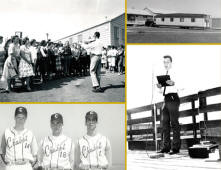 The year was 1961. John F. Kennedy was president. Patsy Cline was
singing "I Fall to Pieces." The ill-fated Bay of Pigs had just
unfolded in Cuba that spring. And on an early morning in late
August, Bob Wiseman sat down to fill out an application for the new
South County Junior College in San Leandro. Bob, one of the first to
apply, had graduated from Castro Valley High School in 1958, served
in the Marine Corps in Okinawa, and attended San Jose State for a
year. Now he was seeking a college closer to home, and this new
facility seemed perfect. The year was 1961. John F. Kennedy was president. Patsy Cline was
singing "I Fall to Pieces." The ill-fated Bay of Pigs had just
unfolded in Cuba that spring. And on an early morning in late
August, Bob Wiseman sat down to fill out an application for the new
South County Junior College in San Leandro. Bob, one of the first to
apply, had graduated from Castro Valley High School in 1958, served
in the Marine Corps in Okinawa, and attended San Jose State for a
year. Now he was seeking a college closer to home, and this new
facility seemed perfect.
Better yet, he had snagged a position at
the
bookstore before the college even opened.
The word started getting around. By the second semester, San Leandro
resident Helen Bridge had learned of the new college from her
girlfriend and they got in the car and drove the short distance to
the school to enroll. A 24-year-old mother of three children, ages
4, 2, and 6 months, Helen wanted to improve herself by following her
passion. So she signed up for evening classes in music appreciation
and psychology.
Around the same time, Dick Albert, 30, had just finished his M.A. in
English at UC Berkeley and instead of going into a Ph.D. program
like most of his classmates, he had earned a special 10-unit
teaching certification so he could teach in a community college. At
the suggestion of his friend Leo Dodson, an English teacher at the
new junior college, Dick applied there as well. It was the day
before classes started, and there was just one teaching position
left. And he got it.
The twists of fate that landed Dick Albert that last faculty spot
and brought Helen and Bob into the San Leandro classrooms would end
up creating lifelong careers for all three in the place that would
soon come to be known as Chabot College. The community college
system that began in California in 1914 allowed high school
districts to offer college classes at no cost. Fresno City College
was the first community college to opens its doors, followed by a
steady string of campuses that would attract a combined 74,000
students by 1956.
Realizing how many of its residents were going to colleges outside
of its area, Alameda's South County officials began looking into a
community college district of its own. In 1960, Hayward and San
Leandro united to form a joint junior college district and proposed
to open a college by September of 1961. The voters accepted the
proposal to move ahead with the plans.
It didn't take long for their dream to materialize. In May, a newly
elected Board of Trustees met for the first time and quickly got to
work. They found a temporary location on 7.5 acres next to Pacific
High School in San Leandro at a cost of $5,000 per year. Then they
secured six used portables from the Oakland School District for $225
and hired Dr. Reed L. Buffington as the Superintendent/ President to
lead the new college. Dr. Buffington, in turn, hired administrators,
support staff, and 26 faculty members.
With the placement of a 30-foot flagpole in the center of campus,
the doors opened on September 11, 1961, an incredibly short four
months after the decision was made to open the college. The
expectation of 300 students turned into nearly four times that many
as a line of 1,163 students snaked around the campus waiting to
register.
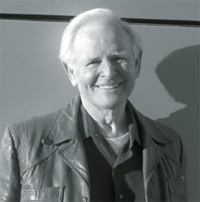 "It
was enthusiastic chaos," says Bob, who recalls walking through muddy
parking lots to get to his classes. "The more people we saw, the
more it validated our own decisions to come to the school. It was
very much a pioneer spirit and people were excited about what the
school could become." "It
was enthusiastic chaos," says Bob, who recalls walking through muddy
parking lots to get to his classes. "The more people we saw, the
more it validated our own decisions to come to the school. It was
very much a pioneer spirit and people were excited about what the
school could become."
In fact, during the three years of its existence, that spirit would
lead to many student activities, including dances (like the Mid-Term
Stomp), drama performances (by the Vestpocket Players), a newspaper
(originally called The Chabot News), and winning football and
baseball teams. Students often gathered at the Strawberry Hut, a
popular off-campus site.
"There was a great camaraderie among the students," says Bob. "As a
group, we had to make decisions like what the school colors would be
(originally brown and gold) and what the mascot would be
(Gladiator)."
But Bob had an even closer connection. He was dating Lonee Palmer,
the daughter of the new math and science dean Hal Palmer, formerly
an instructor at Castro Valley High School. Hal Palmer went on to be
the first Faculty Senate president and the first dean of math and
science for the next 20 years. And Bob and Lonee went on to get
married and recently celebrated their 47th anniversary.
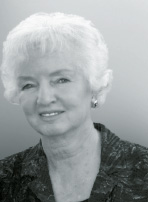 For
Helen Bridge, the college experience literally changed her life. A
young mother looking to expand her horizons, she found what she was
looking for and became "passionate" about her education—even though
the first campus may not have been ideal. For
Helen Bridge, the college experience literally changed her life. A
young mother looking to expand her horizons, she found what she was
looking for and became "passionate" about her education—even though
the first campus may not have been ideal.
"The parking lot was not paved, the buildings were surplus school
portables, and the location was on the flight path to Oakland
Airport so the windows would rattle when the planes flew low," says
Helen. "But it was new and exciting and a wonderful place to be. It
shaped my adult life as it did for so many other students."
In particular, Helen recalls a class called "Group Dynamics," taught
by counselor Bill DeRosiers that met once a week for three hours.
"After class, a number of us, including the instructor, would go to
Straw Hat Pizza on Washington Avenue and have beer and pizza and
give feedback about the class. That experience gave me a different
impression of myself and who I wanted to be," says Helen, who
divorced while she was still in college. "I got straight A's in my
classes, and it was Bill who encouraged me to go to Cal State
Hayward. Then as soon as I graduated, I came back to Chabot to
teach."
While at Chabot, Helen met Les Bridge, a part-time electrical
apprenticeship instructor, who got Helen's phone number from the
switchboard operator and asked her out on a date. They married less
than four months later and they both continued to teach at Chabot
until their retirement.
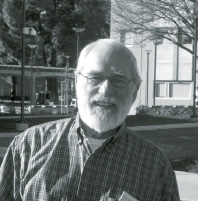 Meanwhile,
Dick Albert was looking for direction after getting out of the army
so he attended evening classes at Los Angeles Valley Junior College.
The rewarding experience he had there gave him the impetus (and
enough credits) to transfer to UC Berkeley to study English with the
goal of becoming a community college instructor himself. Meanwhile,
Dick Albert was looking for direction after getting out of the army
so he attended evening classes at Los Angeles Valley Junior College.
The rewarding experience he had there gave him the impetus (and
enough credits) to transfer to UC Berkeley to study English with the
goal of becoming a community college instructor himself.
"When I finished my master's degree in English, my classmates were
shocked when I registered for a credential program instead of a
Ph.D. like they were," says Dick. "But I knew that at a community
college I could teach all the time and not have to do research, and
that's what I knew I wanted to do."
Starting in those early years Dick inspired hundreds of students to
share his love of writing, poetry, and literature and his drive to
make a difference: he started the first creative writing program, he
led students to publish the first literary review magazine, he
taught poetry to returning Vietnam vets, and he championed many
causes on campus.
"I loved teaching at Chabot and I never wanted to leave," says Dick,
whose 41 years at Chabot became one of the longest of any faculty
member. "My students would go off to Cal State Hayward and San
Francisco State and come back and say, 'why don't you teach
there—you're much better than our teachers.' But I'd say, 'no, I'm
happy right here.'"
Dick also has fond memories of the camaraderie among the San Leandro
faculty. "All of the faculty offices were jumbled together and not
separated by discipline because there wasn't enough room," says
Dick. "So we ended up getting to know each other well and had strong
connections outside of our classrooms as a faculty family."
Over the next few years, the college received its first
accreditation, and a bond was passed to build a new campus on a
94-acre plot of farmland in Hayward. The name, voted on by the
students, became Chabot College.
So four years after the San Leandro campus was quickly put together,
it was as quickly dismantled. Dick moved to the new Hayward campus
to continue teaching, and Bob and Helen completed their education
before joining him. Among the three of them, they served the college
for 110 years before they retired. Within their tenure, they were
each honored with the prestigious Reed L. Buffington Faculty
Excellence Award.
Today, there are lots of changes. The campus is overflowing with
more than 15,000 students per semester, the curriculum includes 125
different associate degrees and certificate programs, and the
students come from more than 33 different countries.
The American flag proudly waving at the entrance to Chabot is the
only structure that was transported from the San Leandro campus to
Hayward. It serves as a reminder of where this institution of
excellence started and how far it has come 50 years later.
"Chabot is a priceless asset to the community," says Helen Bridge.
"It is the crown jewel of Hayward and brings great credit to the
city. It is a resource that is unmatched."

Dr. Reed L. Buffington Recalls the Roots of Chabot College
Susan May spoke to Dr. Buffington, Chabot’s Founding
Superintendent/President,
by phone from his home in Kenwood to get the behind-the-scenes scoop
on how he
so successfully got the college off the ground 50 years ago.
The plan to create a college was approved just four months before
it opened. How did you get it done so quickly?
I was hired on July 1, 1961, so I actually had only two months. And
one of the main reasons they hired me was because I had agreed to
get it done so quickly. Starting a college from ground zero involved
a tremendous number of tasks that had to be performed almost
simultaneously. The most important person I hired was my business
manager, Peter Barthleme. We took up temporary quarters in the
offices of the superintendent of schools on Winton Avenue where we
were provided with three cubicles. Just hiring the 26 faculty
members was a daunting task. Then we had to get a support staff, buy
equipment, create a curriculum, set up a registration system, and on
and on.
You were expecting 300 students the first day but you ended up
with more than 1,000. Were you shocked?
I was too tired to be shocked–I was just looking at what I had to do
next. Once the students were in line for registration, I needed to
figure out what I was going to do with them. My job was, ‘where do
we go from here?’ But I was very pleased to have such a great
turnout.
How did you get through those hectic first years with such
success?
I was the president and able to have the influence that a president
has. But I didn’t do it alone. I had a wonderful staff of
administrators, confident faculty, and a great support staff. It was
a chain of people who did a great job. If I had any talent, it was
in the area of selecting outstanding people to join our staff and
then letting them do their jobs.
You are best known for putting Chabot students above anything
else. How has that influenced the college?
The only reason we were there from the beginning was because of the
students. If you lose that focus, you lose the reason for the
institution, and I was able to amplify that fact through my 20
years. We had an extremely strong faculty committed to good teaching
and committed to achievement. Bob Wiseman, Helen Bridge, and Dick
Albert all had community college backgrounds so you can imagine why
I asked them to join the faculty. They not only had the education
and the intelligence but had the background and experience that
provided that kind of devotion to the students. That’s what made
Chabot College so successful right from the beginning.
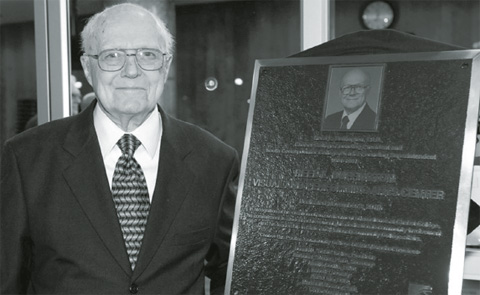
 Return to Table of Contents
Return to Table of Contents
|



